
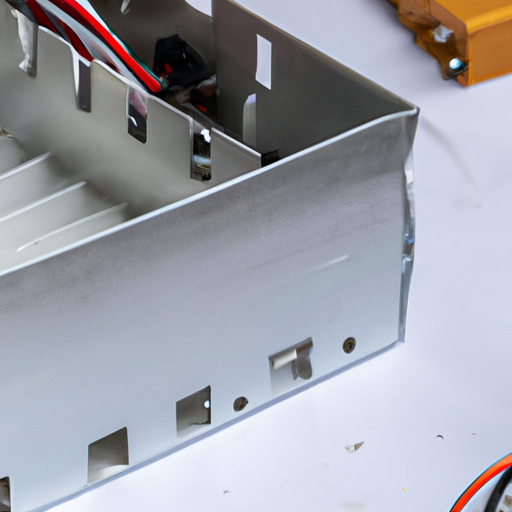
Wiring boxes are an essential component in any electrical system, providing a safe and organized way to connect and protect electrical wires. These boxes come in various shapes and sizes, each designed to meet specific needs and requirements. In this article, we will explore the key features of wiring boxes and how they contribute to the overall functionality and safety of electrical systems.1. Material and Construction:
Wiring boxes are typically made of durable materials such as plastic, metal, or fiberglass. The choice of material depends on the specific application and environment in which the box will be installed. Plastic boxes are lightweight and easy to install, making them ideal for residential applications. Metal boxes, on the other hand, are more robust and provide better protection against fire and impact, making them suitable for commercial and industrial settings.2. Size and Configuration:
Wiring boxes come in various sizes and configurations to accommodate different types and quantities of wires. The size of the box is determined by the number of wires that need to be connected and the space available for installation. Smaller boxes are typically used for single-circuit applications, while larger boxes are used for multiple circuits or junctions. Some boxes are designed to be surface-mounted, while others are designed for recessed installation in walls or ceilings.3. Knockouts and Cable Clamps:
Wiring boxes are equipped with knockouts and cable clamps to facilitate the entry and exit of wires. Knockouts are pre-cut holes in the box that can be removed to create openings for wires to pass through. Cable clamps are used to secure and protect the wires inside the box, preventing them from being damaged or pulled out accidentally. These features help to maintain the integrity of the electrical connections and ensure the safety of the system.4. Grounding and Bonding:
Proper grounding and bonding are essential for the safe operation of electrical systems. Wiring boxes are equipped with grounding screws or terminals that allow for the connection of grounding wires. This helps to prevent electrical shocks and ensures that excess current is safely directed to the ground. Bonding straps or connectors may also be included in the box to establish a secure electrical connection between metal components, such as conduit or armored cable.5. Compatibility with Devices:
Wiring boxes are designed to accommodate various electrical devices, such as switches, outlets, and lighting fixtures. The boxes are equipped with mounting brackets or screws that allow these devices to be securely attached to the box. Some boxes also feature built-in cable clamps or strain relief devices to help secure the wires connected to the devices. This ensures that the devices are properly installed and function correctly within the electrical system.6. Code Compliance:
Wiring boxes must meet the requirements of the National Electrical Code (NEC) and other relevant standards to ensure the safety and reliability of the electrical system. The boxes are tested and certified by independent organizations to verify their compliance with these standards. This ensures that the boxes are manufactured to high-quality standards and provide adequate protection for the wires and devices connected to them.In conclusion, wiring boxes are an essential component of electrical systems, providing a safe and organized way to connect and protect electrical wires. These boxes come in various sizes and configurations, with features such as knockouts, cable clamps, grounding terminals, and compatibility with devices. By choosing the right wiring box for your application and ensuring that it meets code requirements, you can ensure the safety and reliability of your electrical system.
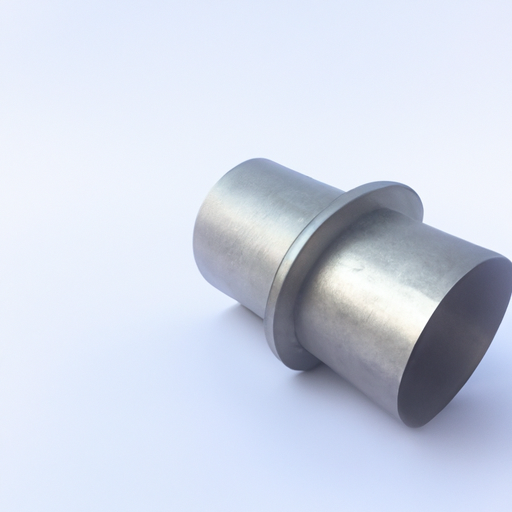
Telescopic sleeves are a versatile and innovative product that has a wide range of applications across various industries. These sleeves are designed to extend and retract, providing flexibility and adaptability for different uses. The main application direction of telescopic sleeves includes but is not limited to the following:1. Industrial automation: Telescopic sleeves are commonly used in industrial automation systems to provide smooth and precise movement for robotic arms, conveyor belts, and other machinery. These sleeves can extend and retract to reach different positions, making them ideal for applications that require precise positioning and control.2. Automotive industry: Telescopic sleeves are used in the automotive industry for various applications, such as adjustable steering columns, seat adjustments, and suspension systems. These sleeves provide flexibility and adjustability, allowing for customized solutions in vehicle design and manufacturing.3. Aerospace industry: Telescopic sleeves are also used in the aerospace industry for applications such as retractable landing gear, adjustable wing flaps, and extendable antennas. These sleeves are lightweight and durable, making them suitable for use in aircraft and spacecraft where weight and space constraints are critical.4. Medical devices: Telescopic sleeves are used in medical devices such as endoscopes, catheters, and surgical instruments. These sleeves provide flexibility and precision for minimally invasive procedures, allowing doctors to access hard-to-reach areas within the body with ease.5. Construction and engineering: Telescopic sleeves are used in construction and engineering for applications such as adjustable scaffolding, telescopic cranes, and extendable bridges. These sleeves provide stability and support for heavy loads, making them essential for construction projects that require height and reach.6. Telecommunications: Telescopic sleeves are used in telecommunications for applications such as extendable antennas, telescopic masts, and adjustable satellite dishes. These sleeves provide flexibility and adjustability for optimal signal reception and transmission, making them essential for communication systems.7. Entertainment industry: Telescopic sleeves are used in the entertainment industry for applications such as retractable stages, extendable lighting rigs, and adjustable sets. These sleeves provide versatility and creativity for stage productions, concerts, and events, allowing for dynamic and interactive experiences for audiences.Overall, telescopic sleeves have a wide range of applications across various industries, providing flexibility, precision, and adaptability for different uses. These sleeves are essential for applications that require smooth and precise movement, adjustability, and customization. As technology continues to advance, the demand for telescopic sleeves is expected to grow, leading to further innovation and development in this versatile product.

When it comes to martial arts, the ground belt is a significant milestone in a practitioner's journey. It signifies a high level of skill and dedication to the art, as well as a deep understanding of the techniques and principles of the discipline. In this article, we will explore the top 10 ground belt popular models in the mainstream.1. Brazilian Jiu-Jitsu (BJJ): Brazilian Jiu-Jitsu is one of the most popular ground belt martial arts in the world. It focuses on grappling and ground fighting techniques, with an emphasis on submissions and positional control. BJJ has gained widespread popularity in recent years, thanks in part to the success of fighters like Royce Gracie in the early days of the UFC.2. Judo: Judo is a Japanese martial art that focuses on throws and takedowns, as well as ground fighting techniques. It is known for its emphasis on leverage and technique over brute strength, making it an effective martial art for practitioners of all sizes and abilities.3. Sambo: Sambo is a Russian martial art that combines elements of judo, wrestling, and other grappling arts. It is known for its emphasis on both standing and ground fighting techniques, as well as its focus on practical self-defense applications.4. Wrestling: Wrestling is one of the oldest and most widely practiced martial arts in the world. It focuses on takedowns, throws, and ground control, with an emphasis on pinning an opponent's shoulders to the mat. Wrestling is a popular sport in many countries, with a long history of competition at the Olympic Games.5. Submission Wrestling: Submission wrestling is a hybrid martial art that combines elements of wrestling, judo, and Brazilian Jiu-Jitsu. It focuses on takedowns, submissions, and ground control, with an emphasis on practical self-defense applications.6. Catch Wrestling: Catch wrestling is a traditional form of wrestling that originated in England in the 19th century. It focuses on takedowns, submissions, and ground control, with an emphasis on joint locks and chokes. Catch wrestling has experienced a resurgence in recent years, thanks in part to the popularity of MMA.7. Luta Livre: Luta Livre is a Brazilian martial art that focuses on submissions and ground fighting techniques. It is similar to Brazilian Jiu-Jitsu, but with a greater emphasis on leg locks and other lower body submissions. Luta Livre has a strong following in Brazil and other countries in South America.8. Shooto: Shooto is a Japanese martial art that combines elements of wrestling, judo, and Brazilian Jiu-Jitsu. It is known for its emphasis on takedowns, submissions, and ground control, as well as its focus on realistic self-defense scenarios. Shooto has gained popularity in recent years, thanks in part to the success of fighters like Takanori Gomi and Rumina Sato.9. Combat Sambo: Combat Sambo is a Russian martial art that combines elements of judo, wrestling, and striking. It is known for its emphasis on takedowns, submissions, and ground control, as well as its focus on practical self-defense applications. Combat Sambo has a strong following in Russia and other countries in Eastern Europe.10. No-Gi Grappling: No-Gi grappling is a form of submission wrestling that is practiced without the traditional gi or uniform. It focuses on takedowns, submissions, and ground control, with an emphasis on practical self-defense applications. No-Gi grappling has gained popularity in recent years, thanks in part to the rise of submission-only grappling tournaments like ADCC.In conclusion, the ground belt is a significant milestone in a martial artist's journey, signifying a high level of skill and dedication to the art. The top 10 ground belt popular models in the mainstream include Brazilian Jiu-Jitsu, Judo, Sambo, Wrestling, Submission Wrestling, Catch Wrestling, Luta Livre, Shooto, Combat Sambo, and No-Gi Grappling. Each of these martial arts has its own unique techniques and principles, making them popular choices for practitioners of all levels and abilities.

Mark is a complex individual with a multitude of characteristics that make him unique. He is a man of many talents, with a passion for music, a love for nature, and a deep sense of empathy for others. In this article, we will explore the various facets of Mark's personality and delve into what makes him the person he is today.One of the first things that people notice about Mark is his love for music. He is a talented musician who can play multiple instruments, including the guitar, piano, and drums. His passion for music runs deep, and he can often be found jamming out with friends or writing his own songs in his spare time. Music is not just a hobby for Mark; it is a way for him to express himself and connect with others on a deeper level.In addition to his musical talents, Mark also has a deep appreciation for nature. He is an avid hiker and camper, always seeking out new trails and camping spots to explore. Being in nature brings Mark a sense of peace and tranquility that he can't find anywhere else. Whether he is hiking through the mountains or sitting by a campfire under the stars, Mark feels a deep connection to the natural world around him.One of the most striking things about Mark is his empathy for others. He is a compassionate and caring individual who always puts the needs of others before his own. Whether it's lending a listening ear to a friend in need or volunteering at a local charity, Mark is always willing to help those around him. His empathy extends to all living beings, and he is a staunch advocate for animal rights and environmental conservation.Despite his many positive qualities, Mark is not without his flaws. He can be stubborn and set in his ways at times, unwilling to compromise or see things from another perspective. This can lead to conflicts with others, but Mark is always willing to work through these issues and find a resolution that benefits everyone involved.In conclusion, Mark is a complex individual with a multitude of characteristics that make him unique. His passion for music, love for nature, and deep sense of empathy for others all contribute to the person he is today. While he may have his flaws, Mark's positive qualities far outweigh any negatives, making him a truly remarkable individual.
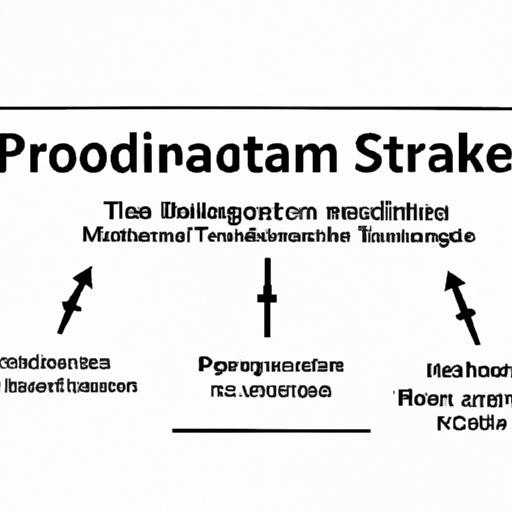
The mainstream Mark production process is a complex and intricate system that involves multiple steps and stages to create high-quality products that meet the demands of consumers. From the initial design phase to the final packaging and distribution, every aspect of the production process is carefully planned and executed to ensure that the end result is a product that is both functional and aesthetically pleasing.The first step in the Mark production process is the design phase. This is where the product concept is developed and refined, taking into account factors such as market trends, consumer preferences, and technical specifications. Designers work closely with engineers and other experts to create a product that is not only visually appealing but also practical and functional.Once the design is finalized, the next step is prototyping. This involves creating a physical model of the product to test its functionality and durability. Prototyping allows designers to make any necessary adjustments before moving on to the next stage of production.After the prototype has been approved, the production process can begin. This typically involves sourcing materials, manufacturing components, and assembling the final product. Depending on the complexity of the product, this stage may involve multiple suppliers and manufacturers working together to ensure that each component meets the required specifications.Quality control is a crucial aspect of the production process. Inspectors carefully examine each component and finished product to ensure that it meets the company's standards for quality and performance. Any defects or issues are addressed and corrected before the product is packaged and shipped to customers.Packaging is another important step in the production process. The packaging not only protects the product during shipping and storage but also serves as a marketing tool to attract consumers. Designers work to create packaging that is both visually appealing and informative, providing customers with all the information they need to make an informed purchase.Once the product is packaged, it is ready for distribution. This involves shipping the product to retailers or directly to customers. Logistics experts work to ensure that the product reaches its destination in a timely and cost-effective manner, coordinating with shipping companies and distributors to streamline the process.Throughout the production process, communication is key. Teams of designers, engineers, manufacturers, and marketers work together to ensure that the product meets the company's goals and objectives. Regular meetings and updates help to keep everyone on the same page and address any issues that may arise.In conclusion, the mainstream Mark production process is a complex and multifaceted system that involves multiple stages and steps to create high-quality products that meet the demands of consumers. From the initial design phase to the final distribution, every aspect of the production process is carefully planned and executed to ensure that the end result is a product that is both functional and aesthetically pleasing. By following a systematic approach and working together as a team, companies can create products that stand out in the marketplace and attract loyal customers.
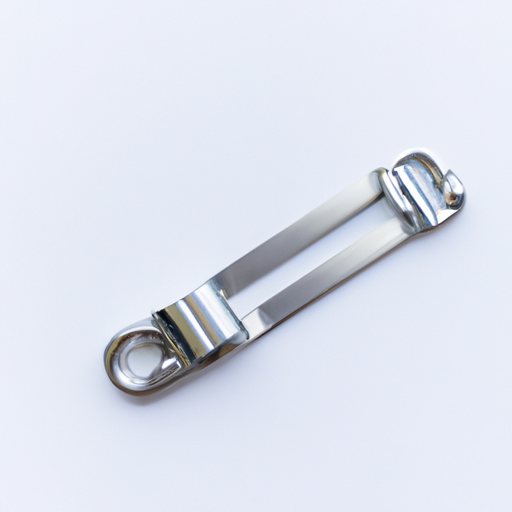
Cable fixed buckles are essential components in various industries, including automotive, aerospace, construction, and electronics. These buckles are used to secure cables and wires in place, preventing them from getting tangled or damaged. There are several popular models of cable fixed buckles available in the market, each designed to meet specific requirements and applications.One of the most popular models of cable fixed buckles is the adhesive-backed cable tie mount. This type of buckle features a strong adhesive backing that allows it to be easily attached to any surface, providing a secure mounting point for cable ties. Adhesive-backed cable tie mounts are commonly used in automotive and electronics applications, where space is limited, and a permanent mounting solution is required.Another popular model of cable fixed buckle is the screw-mounted cable tie mount. This type of buckle is designed to be mounted using screws, providing a more secure and permanent mounting solution compared to adhesive-backed mounts. Screw-mounted cable tie mounts are commonly used in construction and industrial applications, where a high level of durability and reliability is required.Cable clamp mounts are also a popular choice for securing cables and wires in place. These buckles feature a clamp design that allows them to be easily attached to a surface, providing a secure and adjustable mounting point for cables. Cable clamp mounts are commonly used in aerospace and telecommunications applications, where precise cable management is essential.In addition to these popular models, there are also specialized cable fixed buckles available for specific applications. For example, self-adhesive cable tie mounts are designed for quick and easy installation without the need for screws or other mounting hardware. These buckles are commonly used in temporary or low-impact applications where a permanent mounting solution is not required.Another specialized model of cable fixed buckle is the magnetic cable tie mount. This type of buckle features a magnetic backing that allows it to be easily attached to any metal surface, providing a secure and versatile mounting solution for cables. Magnetic cable tie mounts are commonly used in automotive and industrial applications, where quick and easy installation is essential.Overall, cable fixed buckles are essential components for securing cables and wires in place in various industries. By choosing the right model of cable fixed buckle for your specific application, you can ensure that your cables are properly secured and protected from damage. Whether you need a permanent mounting solution or a temporary fix, there are plenty of options available to meet your requirements.
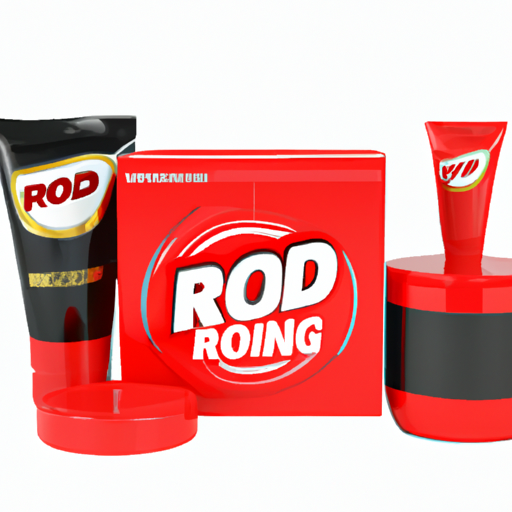
Rod is a versatile and essential product that serves a variety of purposes in different industries and applications. From construction to manufacturing, from transportation to sports, rods play a crucial role in providing support, structure, and functionality. In this article, we will explore the different types of rods, their uses, and the importance of rods in various fields.Rods are long, thin, cylindrical objects that are typically made of metal, plastic, or other materials. They come in various shapes and sizes, depending on their intended use. Some common types of rods include steel rods, aluminum rods, fiberglass rods, and carbon fiber rods. Each type of rod has its own unique properties and characteristics that make it suitable for specific applications.In construction, rods are used for reinforcing concrete structures, such as buildings, bridges, and roads. Steel rods, also known as rebar, are commonly used to add strength and durability to concrete structures. By embedding steel rods in concrete, the tensile strength of the material is increased, making it more resistant to cracking and bending. This is especially important in areas prone to earthquakes or other natural disasters.In manufacturing, rods are used in a wide range of applications, from machining to assembly. Steel rods are often used as shafts, axles, and spindles in machinery and equipment. They provide support and stability to moving parts, allowing them to function properly and efficiently. Aluminum rods are lightweight and corrosion-resistant, making them ideal for use in aerospace and automotive industries.In transportation, rods are used in vehicle components such as suspension systems, steering mechanisms, and engine parts. Steel rods are commonly used in shock absorbers and tie rods to provide stability and control to the vehicle. Fiberglass rods are used in the construction of boat masts and sails, providing strength and flexibility to withstand the forces of wind and water.In sports, rods are used in equipment such as fishing rods, golf clubs, and hockey sticks. Fishing rods are typically made of fiberglass or carbon fiber, providing the flexibility and strength needed to catch fish. Golf clubs are made of steel or graphite rods, allowing players to hit the ball with precision and power. Hockey sticks are made of composite materials, such as carbon fiber, to provide durability and performance on the ice.Overall, rods are a versatile and essential product that plays a crucial role in various industries and applications. Whether it's reinforcing concrete structures, supporting machinery, or enhancing sports equipment, rods are an integral part of our everyday lives. Their strength, durability, and flexibility make them indispensable in a wide range of fields, making them a valuable and indispensable product.
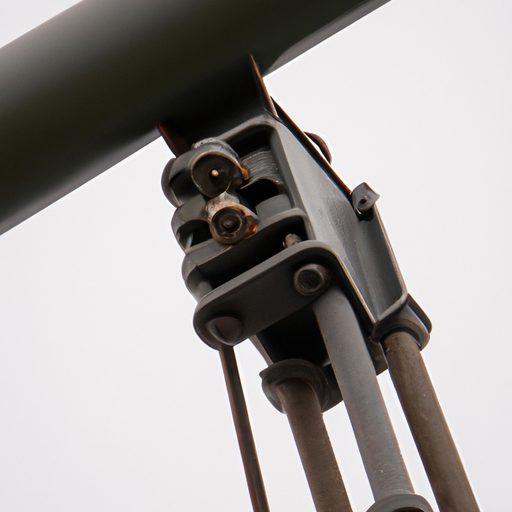
Cable support and fasteners are essential components in the installation and maintenance of electrical and communication systems. These devices are used to secure and organize cables, preventing them from becoming tangled or damaged. In this article, we will explore the importance of cable support and fasteners, the different types available, and how they are used in various applications.Cable support refers to the methods and devices used to secure cables in place. Without proper support, cables can become tangled, leading to signal interference and potential safety hazards. Cable support systems are designed to keep cables organized and protected, ensuring optimal performance and longevity.Fasteners are used to secure cables to a surface or structure. They come in a variety of shapes and sizes, including clips, clamps, straps, and ties. Fasteners are essential for keeping cables in place and preventing them from moving or becoming loose. They also help to maintain the integrity of the cable installation, ensuring that cables are properly supported and protected.There are several types of cable support and fasteners available, each designed for specific applications and environments. Some common types include:- Cable clips: These are small plastic or metal clips that are used to secure cables to a surface. They are easy to install and provide a secure hold on the cable.- Cable clamps: These are larger devices that are used to secure multiple cables together. They are often used in industrial applications where large bundles of cables need to be organized and protected.- Cable ties: These are flexible straps that are used to bundle cables together. They are easy to use and provide a secure hold on the cables.- Cable straps: These are adjustable straps that are used to secure cables to a surface. They are often used in applications where cables need to be easily accessible for maintenance or repairs.- Cable hangers: These are devices that are used to suspend cables from a ceiling or overhead structure. They are often used in commercial and industrial applications where cables need to be elevated for safety or accessibility.Cable support and fasteners are used in a wide range of applications, including residential, commercial, and industrial settings. In residential applications, cable support and fasteners are used to organize and protect cables in homes and offices. In commercial settings, they are used to secure cables in retail stores, restaurants, and other businesses. In industrial applications, cable support and fasteners are used to organize and protect cables in factories, warehouses, and other industrial facilities.In conclusion, cable support and fasteners are essential components in the installation and maintenance of electrical and communication systems. They help to keep cables organized and protected, ensuring optimal performance and longevity. With a wide range of types and applications available, cable support and fasteners are a versatile solution for securing cables in place.
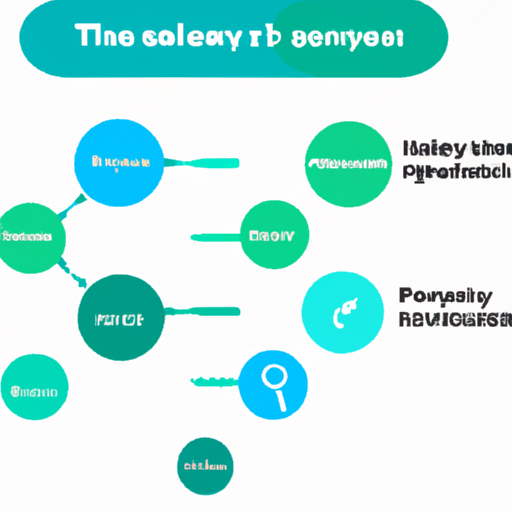
Scaling is a crucial aspect of any business looking to grow and expand. It involves increasing the capacity and capability of a company to handle growth in a sustainable manner. There are several key product categories that are essential for successful scaling, each playing a vital role in the overall growth and development of a business.1. Technology and InfrastructureOne of the most important product categories for scaling is technology and infrastructure. This includes the hardware, software, and systems that are necessary to support the growth of a business. As a company expands, it needs to invest in technology that can handle increased demand, improve efficiency, and streamline operations. This may include upgrading servers, implementing new software systems, or investing in automation tools to help streamline processes.Having a solid technology infrastructure in place is essential for scaling, as it allows a business to handle increased volume and complexity without sacrificing performance or customer experience. Without the right technology and infrastructure in place, a company may struggle to keep up with growth and may face issues such as downtime, slow performance, or security vulnerabilities.2. Marketing and SalesAnother key product category for scaling is marketing and sales. As a business grows, it needs to invest in marketing and sales strategies that can help attract new customers, retain existing ones, and drive revenue growth. This may include investing in digital marketing campaigns, hiring sales staff, or implementing customer relationship management (CRM) systems to track leads and conversions.Effective marketing and sales strategies are essential for scaling, as they help a business reach new customers and drive revenue growth. Without a strong marketing and sales function, a company may struggle to attract new customers, retain existing ones, or drive revenue growth, which can hinder its ability to scale successfully.3. Operations and LogisticsOperations and logistics are another key product category for scaling. As a business grows, it needs to invest in operations and logistics systems that can help it manage increased volume and complexity. This may include implementing inventory management systems, optimizing supply chain processes, or investing in warehouse automation tools to help streamline operations.Having efficient operations and logistics systems in place is essential for scaling, as it allows a business to handle increased volume and complexity without sacrificing efficiency or customer experience. Without the right operations and logistics systems in place, a company may struggle to keep up with growth and may face issues such as stockouts, delays, or poor customer service.4. Customer Service and SupportCustomer service and support are also key product categories for scaling. As a business grows, it needs to invest in customer service and support systems that can help it provide a high level of service to its customers. This may include implementing customer service software, hiring customer support staff, or investing in training programs to help staff deliver excellent customer service.Providing excellent customer service and support is essential for scaling, as it helps a business retain existing customers, attract new ones, and build a positive reputation in the market. Without strong customer service and support systems in place, a company may struggle to retain customers, attract new ones, or build a positive reputation, which can hinder its ability to scale successfully.5. Product Development and InnovationProduct development and innovation are also key product categories for scaling. As a business grows, it needs to invest in developing new products and services that can help it attract new customers, retain existing ones, and drive revenue growth. This may include investing in research and development, hiring product development staff, or implementing innovation programs to help drive new product ideas.Developing new products and services is essential for scaling, as it helps a business stay competitive in the market, attract new customers, and drive revenue growth. Without a strong product development and innovation function, a company may struggle to attract new customers, retain existing ones, or drive revenue growth, which can hinder its ability to scale successfully.In conclusion, there are several key product categories that are essential for successful scaling. Technology and infrastructure, marketing and sales, operations and logistics, customer service and support, and product development and innovation are all crucial aspects of scaling that play a vital role in the overall growth and development of a business. By investing in these key product categories, a company can position itself for sustainable growth and success in the long term.
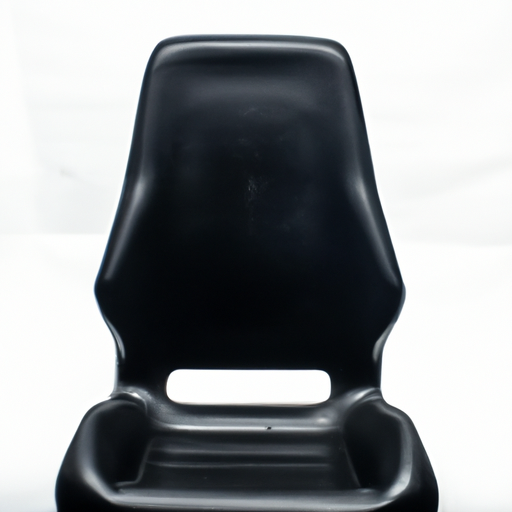
Fixed seating is a term that refers to seating arrangements that are permanently fixed in place, as opposed to movable or temporary seating options. This type of seating is commonly found in theaters, auditoriums, stadiums, and other large venues where a consistent and organized seating layout is necessary.Fixed seating is designed to provide a comfortable and secure seating option for patrons, while also maximizing the use of space in a given venue. These seats are typically bolted or otherwise secured to the floor or structure of the building, ensuring that they remain in place and do not shift or move during use.One of the key benefits of fixed seating is its ability to provide a consistent and organized seating arrangement for patrons. In venues such as theaters and auditoriums, fixed seating allows for a predetermined seating layout that can be easily navigated by patrons and staff alike. This can help to reduce confusion and congestion, particularly during busy events or performances.Fixed seating also offers a level of comfort and stability that may not be present with movable seating options. The seats are typically designed with ergonomic considerations in mind, providing support and comfort for patrons during extended periods of sitting. Additionally, the fixed nature of these seats ensures that they remain in place and do not shift or move, providing a secure and stable seating option for patrons.In addition to providing comfort and organization, fixed seating can also help to maximize the use of space in a given venue. By securing the seats in place, venue operators can optimize the seating layout to accommodate the maximum number of patrons while still maintaining a comfortable and accessible seating arrangement. This can be particularly important in venues with limited space, where every available seat counts.Fixed seating is also a cost-effective option for venue operators, as it eliminates the need for frequent reconfiguration or replacement of seating options. Once installed, fixed seating requires minimal maintenance and upkeep, making it a durable and long-lasting seating solution for venues of all sizes.Overall, fixed seating offers a range of benefits for both patrons and venue operators alike. From providing a comfortable and secure seating option to maximizing space and reducing maintenance costs, fixed seating is a versatile and practical choice for a wide range of venues. Whether you're attending a performance at a theater or cheering on your favorite team at a stadium, fixed seating provides a reliable and efficient seating option for all.

In today's fast-paced and technology-driven world, businesses rely heavily on their IT infrastructure to operate efficiently and effectively. As a result, having a reliable and efficient support model in place is crucial to ensure that any issues or problems that arise can be quickly addressed and resolved.There are several different mainstream support models that businesses can choose from, each with its own set of advantages and disadvantages. In this article, we will explore the differences between these support models and help you determine which one is best suited for your organization.1. Break/Fix Support ModelThe break/fix support model is perhaps the most traditional and straightforward approach to IT support. In this model, businesses only seek help from IT professionals when something breaks or malfunctions. The IT team then works to fix the issue and get the system back up and running as quickly as possible.While the break/fix support model may seem cost-effective in the short term, it can lead to longer downtime and higher costs in the long run. This is because businesses are only addressing issues as they arise, rather than proactively monitoring and maintaining their systems to prevent problems from occurring in the first place.2. Reactive Support ModelSimilar to the break/fix support model, the reactive support model involves addressing issues as they arise. However, in this model, businesses may have a dedicated IT team or support provider that is available to respond to issues quickly and efficiently.While the reactive support model can help minimize downtime and keep systems running smoothly, it still lacks the proactive approach needed to prevent issues from occurring in the first place. Businesses may find themselves constantly putting out fires rather than focusing on strategic initiatives and growth.3. Proactive Support ModelThe proactive support model takes a more preventative approach to IT support. In this model, businesses work with a dedicated IT team or support provider to monitor and maintain their systems on an ongoing basis. This includes regular system updates, security patches, and performance monitoring to identify and address potential issues before they become major problems.By taking a proactive approach to IT support, businesses can minimize downtime, improve system performance, and reduce the risk of security breaches. While the proactive support model may require a higher upfront investment, the long-term benefits in terms of efficiency, productivity, and cost savings can far outweigh the initial costs.4. Managed Services Support ModelThe managed services support model is a comprehensive approach to IT support that combines proactive monitoring and maintenance with ongoing support and management. In this model, businesses work with a managed services provider (MSP) to outsource their IT needs and ensure that their systems are running smoothly at all times.Managed services providers offer a range of services, including network monitoring, security management, data backup and recovery, and help desk support. By partnering with an MSP, businesses can benefit from a team of experts who are dedicated to keeping their systems secure, efficient, and up-to-date.5. Hybrid Support ModelThe hybrid support model combines elements of both proactive and reactive support models to provide a flexible and customizable approach to IT support. In this model, businesses can choose to outsource certain aspects of their IT support while maintaining in-house capabilities for other areas.For example, a business may choose to outsource network monitoring and security management to an MSP while handling help desk support internally. This allows businesses to tailor their support model to their specific needs and budget, while still benefiting from the expertise and resources of an external provider.In conclusion, there are several mainstream support models that businesses can choose from, each with its own set of advantages and disadvantages. While the break/fix and reactive support models may be suitable for smaller organizations with limited IT needs, larger businesses may benefit from a more proactive or managed services approach.Ultimately, the best support model for your organization will depend on your specific requirements, budget, and long-term goals. By carefully evaluating your options and working with a trusted IT partner, you can ensure that your systems are running smoothly and efficiently, allowing you to focus on growing your business and achieving success.

The appendix is a small, tube-like structure attached to the large intestine. For many years, the appendix was considered a vestigial organ with no known function. However, recent research has suggested that the appendix may play a role in the immune system, specifically in the development and maintenance of beneficial gut bacteria.Despite this new understanding of the appendix's potential function, appendicitis remains a common and potentially serious condition. Appendicitis occurs when the appendix becomes inflamed and infected, leading to symptoms such as abdominal pain, fever, and nausea. If left untreated, appendicitis can progress to a ruptured appendix, which can be life-threatening.The standard treatment for appendicitis is surgical removal of the appendix, a procedure known as an appendectomy. Appendectomies are typically performed laparoscopically, a minimally invasive technique that involves making small incisions in the abdomen and using a camera and specialized instruments to remove the appendix. In some cases, an open appendectomy may be necessary, especially if the appendix has already ruptured.The market for appendectomies is expected to remain steady in the coming years, as appendicitis is a common condition that affects people of all ages. According to the American College of Surgeons, approximately 250,000 appendectomies are performed in the United States each year. The majority of these procedures are done laparoscopically, as this technique offers several advantages over open surgery, including shorter recovery times, less pain, and lower risk of complications.In addition to appendectomies, there is growing interest in non-surgical treatments for appendicitis, such as antibiotics. A recent study published in the Journal of the American Medical Association found that antibiotics may be a safe and effective alternative to surgery for some patients with uncomplicated appendicitis. This approach, known as antibiotic therapy first, has the potential to reduce the need for surgery and associated healthcare costs.Another emerging trend in the treatment of appendicitis is the use of robotic-assisted surgery. Robotic surgery allows for greater precision and control during the procedure, potentially leading to better outcomes for patients. While robotic-assisted appendectomies are still relatively new, they are becoming more widely available in hospitals and surgical centers.Overall, the market outlook for appendicitis treatment is positive, with continued demand for appendectomies and potential growth in non-surgical options. As research into the function of the appendix continues, there may be new developments in the understanding and treatment of this common condition. Healthcare providers and patients alike can expect to see advancements in surgical techniques, antibiotic therapy, and robotic-assisted surgery for appendicitis in the years to come.
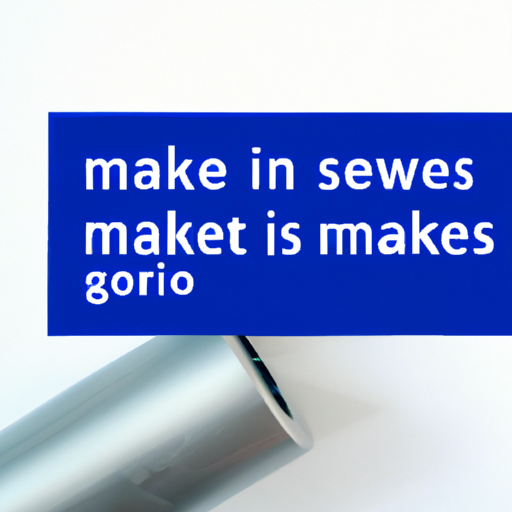
Wiring systems are an essential component of any building or structure, providing the necessary infrastructure for electricity to flow safely and efficiently. As such, the market for wiring systems is a crucial one, with various policies and regulations in place to ensure the safety and quality of these systems. In this article, we will explore some of the key market policies that govern the wiring system industry.One of the most important market policies for wiring systems is the requirement for compliance with national and international standards. These standards are put in place to ensure that wiring systems meet certain safety and performance requirements, and that they are installed and maintained correctly. In the United States, for example, the National Electrical Code (NEC) sets the standards for electrical wiring and installations, while in Europe, the International Electrotechnical Commission (IEC) provides similar guidelines.Compliance with these standards is essential for manufacturers, distributors, and installers of wiring systems, as failure to meet these requirements can result in serious safety hazards and legal consequences. As such, companies operating in the wiring system market must invest in research and development to ensure that their products meet these standards, and they must also provide training and support to their customers to ensure that installations are carried out correctly.Another important market policy for wiring systems is the requirement for certification and testing. In many countries, wiring systems must be certified by a recognized testing laboratory before they can be sold or installed. This certification process involves rigorous testing to ensure that the wiring system meets all relevant safety and performance standards. Additionally, regular testing and inspection of wiring systems are often required to ensure that they continue to meet these standards over time.Certification and testing help to build trust and confidence in the wiring system market, as customers can be assured that the products they are purchasing have been thoroughly tested and meet all necessary requirements. This can be particularly important in industries where safety is a top priority, such as in the construction and manufacturing sectors.In addition to compliance with standards and certification requirements, market policies for wiring systems also include regulations related to environmental sustainability. As concerns about climate change and resource depletion continue to grow, there is increasing pressure on companies to reduce their environmental impact and adopt more sustainable practices.In the wiring system market, this can involve using materials that are more environmentally friendly, such as recycled or biodegradable plastics, as well as designing products that are more energy-efficient and have a lower carbon footprint. Companies that prioritize sustainability in their wiring system products can gain a competitive advantage in the market, as more and more customers are looking for environmentally responsible solutions.Furthermore, market policies for wiring systems may also include regulations related to product safety and liability. In the event of a wiring system failure that results in property damage or personal injury, manufacturers and installers may be held liable for damages. As such, companies operating in this market must have appropriate insurance coverage and quality control measures in place to minimize the risk of such incidents occurring.Overall, the market for wiring systems is governed by a complex set of policies and regulations that are designed to ensure the safety, quality, and sustainability of these essential products. Companies operating in this market must stay informed about these policies and invest in compliance measures to remain competitive and meet the needs of their customers. By prioritizing standards compliance, certification and testing, environmental sustainability, and product safety, companies can build a strong reputation in the wiring system market and contribute to a safer and more sustainable built environment.
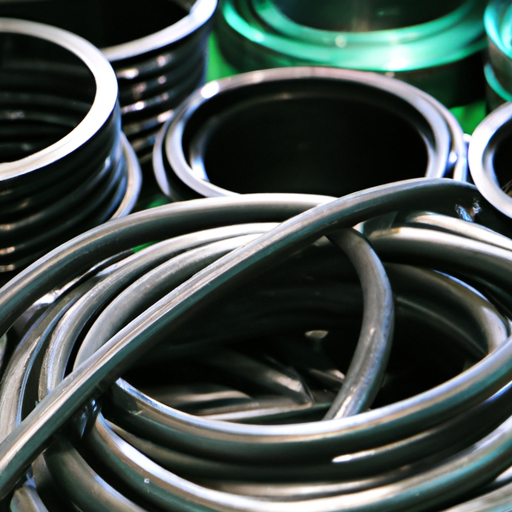
Wire groove is a popular brand known for its high-quality and stylish products. With a wide range of models to choose from, it can be overwhelming to decide which one is the best for you. To help you make an informed decision, we have compiled a list of the top 10 Wire groove popular models in the mainstream.1. Wire groove Classic: The Wire groove Classic is a timeless model that features a sleek design and durable construction. It is perfect for everyday use and comes in a variety of colors to suit your style.2. Wire groove Pro: The Wire groove Pro is a more advanced model that offers additional features such as wireless charging and water resistance. It is perfect for those who are looking for a more high-tech option.3. Wire groove Sport: The Wire groove Sport is designed for those who lead an active lifestyle. It is water-resistant and features a comfortable fit, making it perfect for workouts and outdoor activities.4. Wire groove Mini: The Wire groove Mini is a smaller version of the Classic model, making it perfect for those with smaller wrists. Despite its size, it still offers all the features of the larger models.5. Wire groove Luxe: The Wire groove Luxe is a luxurious model that features a premium design and materials. It is perfect for those who want to make a statement with their accessories.6. Wire groove Fit: The Wire groove Fit is designed for those who are focused on their health and fitness. It features a heart rate monitor and activity tracker to help you stay on top of your fitness goals.7. Wire groove Style: The Wire groove Style is a stylish model that is perfect for those who want to make a fashion statement. It comes in a variety of colors and patterns to suit your personal style.8. Wire groove Active: The Wire groove Active is designed for those who are always on the go. It features a long battery life and GPS tracking, making it perfect for travel and outdoor adventures.9. Wire groove Hybrid: The Wire groove Hybrid is a unique model that combines the features of a smartwatch with the classic design of a traditional watch. It is perfect for those who want the best of both worlds.10. Wire groove Special Edition: The Wire groove Special Edition is a limited-edition model that features exclusive designs and features. It is perfect for collectors and those who want a truly unique accessory.In conclusion, Wire groove offers a wide range of popular models to suit every style and preference. Whether you are looking for a classic design, high-tech features, or a luxurious option, Wire groove has something for everyone. Consider the top 10 Wire groove popular models in the mainstream to find the perfect accessory for you.

Conduit models are an essential component of electrical systems, providing a protective pathway for electrical wiring. There are several different types of conduit models available on the market, each with its own unique features and benefits. In this article, we will explore the differences between mainstream conduit models, including rigid metal conduit (RMC), electrical metallic tubing (EMT), and flexible metal conduit (FMC).Rigid Metal Conduit (RMC)Rigid metal conduit, also known as RMC, is one of the most common types of conduit used in electrical systems. It is made of galvanized steel and is known for its durability and strength. RMC is typically used in commercial and industrial applications where high levels of protection are required.One of the main advantages of RMC is its ability to provide excellent protection against physical damage, moisture, and corrosion. It is also fire-resistant, making it a safe choice for installations in hazardous environments. RMC is available in various sizes, ranging from 1/2 inch to 6 inches in diameter, making it suitable for a wide range of applications.However, RMC can be challenging to install due to its rigid nature. It requires precise measurements and careful bending to fit around corners and obstacles. Additionally, RMC is heavier and more expensive than other types of conduit, which can make it less cost-effective for some projects.Electrical Metallic Tubing (EMT)Electrical metallic tubing, or EMT, is another popular conduit model used in electrical systems. It is made of galvanized steel or aluminum and is known for its lightweight and easy installation. EMT is commonly used in residential and commercial applications where moderate levels of protection are required.One of the main advantages of EMT is its flexibility and ease of installation. It can be easily bent and cut to fit around corners and obstacles, making it ideal for projects with complex layouts. EMT is also corrosion-resistant and can be used in both indoor and outdoor applications.However, EMT provides less protection against physical damage compared to RMC. It is also not as fire-resistant, which may limit its use in hazardous environments. EMT is available in various sizes, ranging from 1/2 inch to 4 inches in diameter, making it suitable for a wide range of applications.Flexible Metal Conduit (FMC)Flexible metal conduit, or FMC, is a type of conduit that is made of interlocking metal strips and is covered with a PVC coating. It is known for its flexibility and ease of installation, making it ideal for projects with tight spaces and complex layouts. FMC is commonly used in residential and commercial applications where moderate levels of protection are required.One of the main advantages of FMC is its flexibility and ease of installation. It can be easily bent and cut to fit around corners and obstacles, making it ideal for projects with limited space. FMC is also corrosion-resistant and can be used in both indoor and outdoor applications.However, FMC provides less protection against physical damage compared to RMC and EMT. It is also not as fire-resistant, which may limit its use in hazardous environments. FMC is available in various sizes, ranging from 1/2 inch to 4 inches in diameter, making it suitable for a wide range of applications.In conclusion, there are several differences between mainstream conduit models, including RMC, EMT, and FMC. RMC is known for its durability and strength, EMT is known for its flexibility and ease of installation, and FMC is known for its flexibility and ease of installation. Each type of conduit has its own unique features and benefits, so it is important to consider the specific requirements of your project when choosing the right conduit model.